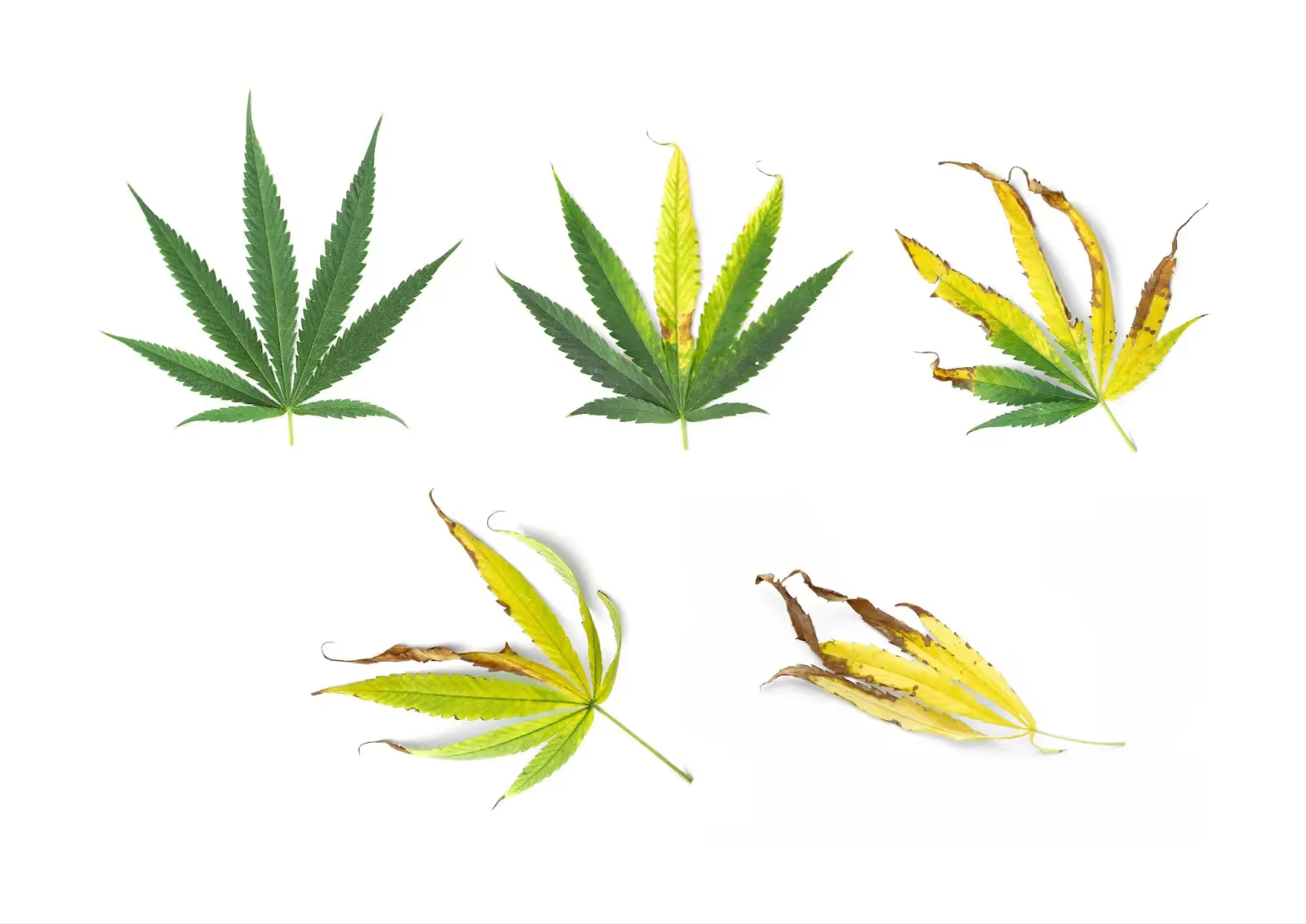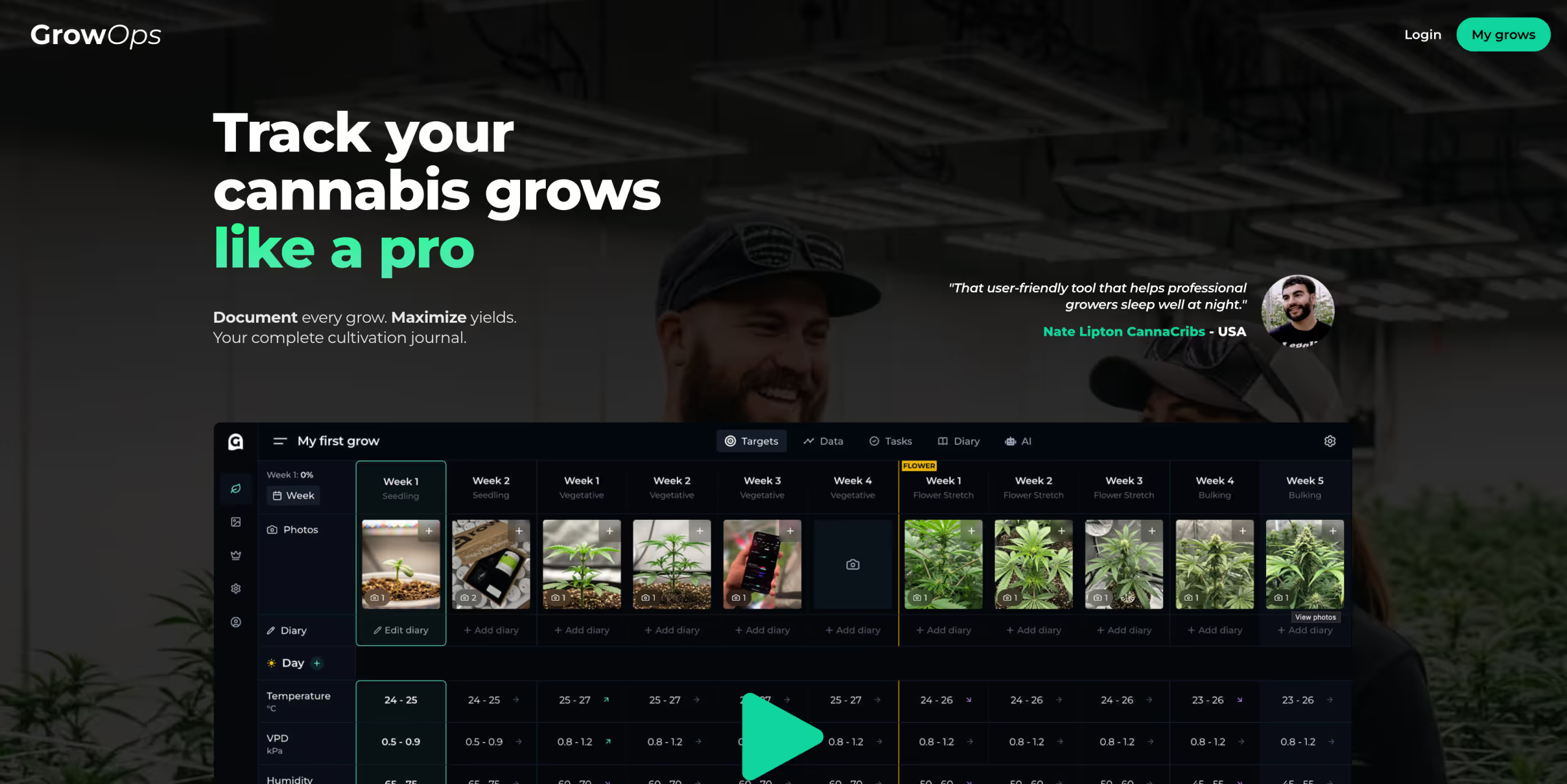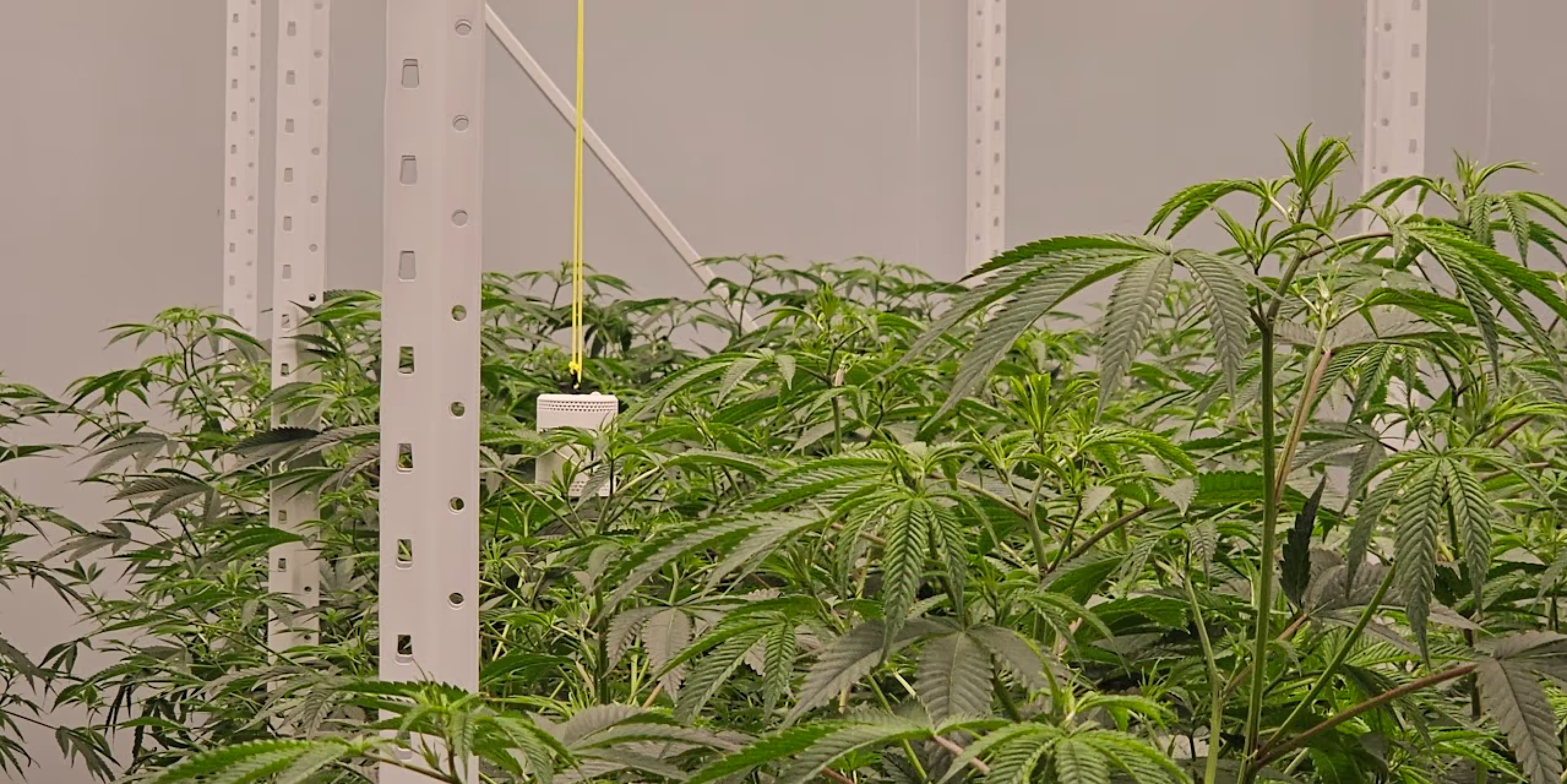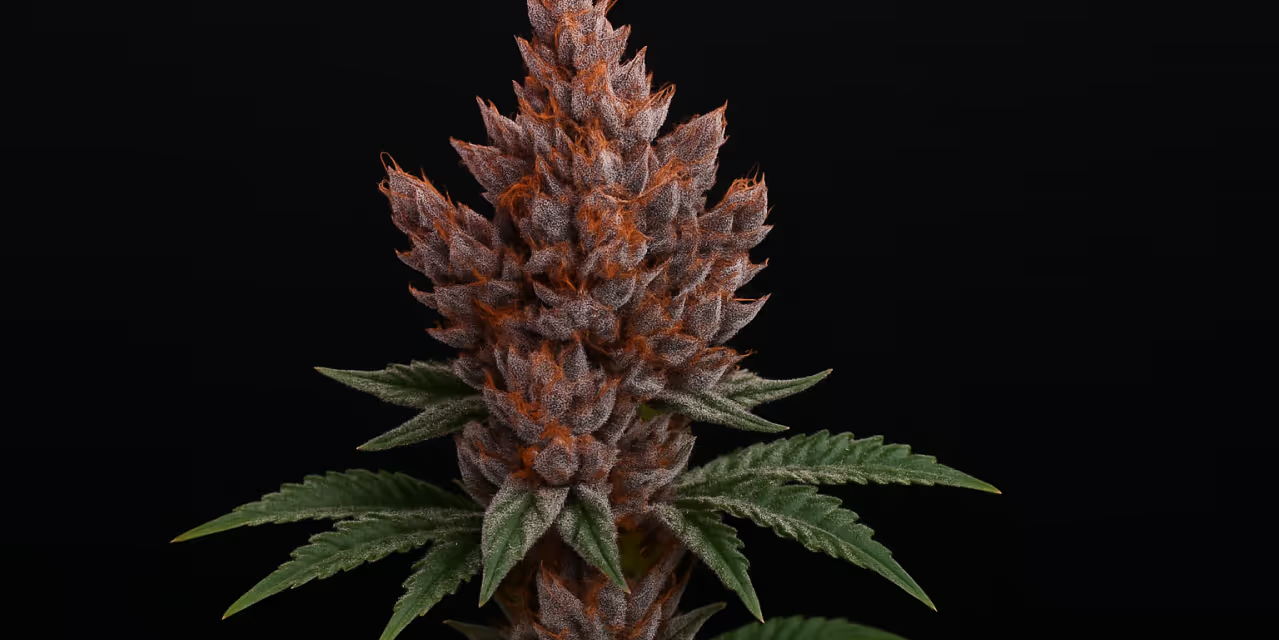Cannabis leaves curling? Causes and solutions


If you’ve ever wondered why you’re cannabis leaves are curling up, you’ve come to the right place!
Cannabis leaves curling shows you that something is amiss in your grow space. Ignoring it could have detrimental effects on your precious harvest.
This article will provide you with information and advice to determine the cause of those curling leaves.
You’ll learn about factors that could be contributing to the problem, including environmental problems, nutrient deficiencies, watering issues, pests and diseases.
Once you understand the causes, you’ll be able to revive your plants and prevent your cannabis leaves from curling up in the future.
Disclaimer: Any information given on this site is for educational purposes only. Please ensure if you’re growing cannabis, you’re doing so in accordance with the law and subject to appropriate permissions and licenses of the applicable country.

Understanding leaf curling
When we talk about cannabis leaves curling, we’re talking about the noticeable curling or rolling up of leaves.
The leaves should have a flat and open appearance. Plants that are suffering will exhibit twisted cannabis leaves and the edges of leaves curling up.
What does cannabis plant leaf curling mean?
Leaves that curl indicate that something isn’t quite right with your plant. Take it as an early warning sign that your cannabis plant is experiencing stress. It’s also a sign that your plant is facing an underlying issue that requires your attention.
Addressing cannabis leaves curling up promptly is crucial. Leaf curling affects the aesthetic appeal of your plant. But more importantly, it can also significantly impact its overall health and productivity if left untreated.
Leaves play a vital role in photosynthesis, which is how plants convert light into energy. Any disruption to their structure or function will hinder plant growth and development.
Taking immediate action when you notice leaf curling can prevent the problem from escalating.
Additionally, addressing the underlying issue causing the curling will improve the overall well-being of your cannabis plant. This leads to healthier foliage and a better chance of a high-yield harvest.


What is the cause of leaf curl?
Leaves curling can be caused by several factors, including high temperatures, too much or too little water, nutrient imbalances, pests and diseases, and even the plant's genetics.
Why are my cannabis leaves curling up?
Environmental issues, such as your plants getting too hot, are often the culprit.
Overwatering, nutrient problems and pest invasions are also possible causes.
Understanding these potential causes is vital to pinpointing the specific issue affecting your plants. Let’s explore some of the common culprits causing your cannabis leaves to curl and how they show up.
We’ll start with the most frequent cause of leaf curl.

Temperature stress
Leaf curl is often due to heat stress - when your plants are experiencing temperatures that are too hot. It might be that you’re not measuring and tracking temperature fluctuations in your grow room - in which case, now is a great time to start!
If you’re monitoring your grow room temperature but your leaves are still curling, it could be that whilst your space’s ambient temperature is ok, the LST (leaf surface temperature) is still too hot. The curling attempts to slow down transpiration and retain water within plant cells.
To get an accurate picture, you need to measure the temperature of the leaves. Not just the temperature in the room, to understand how hot your plants really are.
Temperature and humidity fluctuations
Temperature plays a crucial role in your plants’ plant health. When it gets too hot, cannabis leaves can begin to curl up as a protective measure to reduce surface area and water loss.
On the flip side, when it's too cold, growth can slow down, and leaves may droop or curl downwards.
Humidity adds another layer to this; high humidity can encourage mould growth and pest infestation. Low humidity can dry out the leaves, causing them to curl or crisp at the edges.
Vapour Pressure Deficit (VPD)
When VPD is in the optimal range, cannabis plants can transpire efficiently, keeping themselves cool and taking up nutrients effectively.
Excessive heat combined with low humidity (high VPD) can cause stress to cannabis plants, causing leaf curling as a defence mechanism.
Cold temperatures and high humidity (Low VPD) can create a breeding ground for fungal diseases. This can also lead to curly leaves and other symptoms.

Nutrient issues
Here's a list of nutrient-related issues that can cause leaf curling in cannabis plants, along with how each issue typically shows itself visually:
- Nitrogen (N) deficiency. It can result in pale leaves that turn from green to yellow. Older leaves may curl downwards at the tips and edges as they begin to die.
- Nitrogen toxicity. Dark green leaves, claw-like curling down of the leaf tips, and a general 'burnt' look around the edges.
- Phosphorus (P) deficiency. Leaves may show a bluish-green tint with darker spots and edges, and older leaves can curl downwards or show a purple, red, or brown hue.
- Potassium (K) deficiency. Leaf edges and leaf tips curl upwards and appear burnt, with yellowing between the leaf veins. A rusty look and brittle texture often accompany this. Potassium deficiency is often mistaken for nutrient burn.
- Magnesium (Mg) deficiency. Leaves may curl upwards and show yellowing between the veins, starting from the lower leaves and moving upwards.
- Calcium (Ca) deficiency. New leaves may curl or appear distorted with irregular shapes, and leaf tips might die back.
- Sulfur (S) deficiency: New growth turns pale green to yellow; leaves may curl downwards.
- Iron (Fe) deficiency. Young leaves turn yellow between the veins while the veins remain green, leading to upward curling of the leaves.
- Manganese (Mn) deficiency. Younger leaves may develop yellow spots and mottled, brown splotches, with a slight curling of the leaf edges.
- Copper (Cu) deficiency. Leaves may appear limp, wilting, or curling downwards with a general blue-green tint.
- Zinc (Zn) deficiency. Older fan leaves may curl upwards and develop a rough texture, and new growth may appear twisted or distorted.
- Boron (B) deficiency. New growth may look thick and curl abnormally, with leaves becoming brittle.

Leaf tip burn
Leaf tip burn often appears as crispy, brown tips on cannabis leaves and can sometimes be mistaken for or occur alongside leaf curling.
This condition is frequently caused by nutrient excesses, particularly overfeeding with fertilisers high in salts, which leads to a build-up of nutrients in the leaf tips, causing nutrient burn.
Another common cause is fluctuations in pH levels, which disrupt how your plants absorb nutrients properly, exacerbating the problem.
While leaf tip burn and leaf curling can present together, especially under stress from nutrient imbalances or environmental factors, they are separate issues requiring careful diagnosis to treat them effectively.

Overwatering and underwatering
Overwatering can cause roots to become waterlogged, leading to oxygen deprivation and root rot. This can result in wilting, curling and yellowing leaves that point downwards.
Insufficient watering can cause plants to become dehydrated, resulting in droopy, curled leaves and dry, brittle foliage.
Finding the right balance is crucial. Ensure you water your plants adequately, allowing the top layer of soil to dry out slightly before the next watering if you’re growing in soil. Avoid overwatering to prevent waterlogged roots.

Pest and diseases
Cannabis plants can fall prey to various pests and diseases that lead to leaf curling, each causing damage in its own way:
- Spider mites. These tiny pests suck sap from the leaves, causing them to curl, turn yellow, and develop tiny spots or stippling. Severe infestations can lead to webbing on the plants.
- Aphids. Aphids feed on the sap of cannabis leaves, leading to curling, yellowing, and stunted growth. Aphids can also excrete a sticky substance known as honeydew, which can attract other problems like sooty mould.
- Broad mites and russet mites. These microscopic pests are hard to detect with the naked eye and cause new growth to curl and twist, often leading to distorted and stunted growth.
- Thrips. Thrips scrape at the leaves to feed on the inner contents, leading to silvering, scarring, and curling of the leaves. They can also transmit viruses that further harm the plant.
- Fungus gnats. While adult gnats are more of a nuisance, their larvae can damage roots, leading to symptoms above ground like yellowing, drooping, and curling of leaves due to stress and poor nutrient uptake.
- Powdery mildew. This fungal disease forms a white, powdery coating on leaves, which can cause leaves to curl, twist, and eventually die off if left untreated.
- Root rot. Caused by overwatering and poor drainage, root rot affects the roots, leading to weakened plants with symptoms including yellowing, drooping, and curling of leaves due to poor nutrient and water uptake.
Each of these pests and diseases attacks cannabis plants in unique ways, but all can lead to leaf curling as a sign of stress and damage.
Regularly inspect your plants for early signs of pests, such as visible insects, webbing, or small holes in the leaves. Take appropriate measures to control and eliminate the infestation.
Diseases like bacterial leaf spot can also cause leaf curling. Other visible cannabis leaf symptoms are spots, lesions, or powdery growth on the leaves.
Diagnosing leaf curl
Observation is your most valuable tool for diagnosing the underlying cause of leaf curling in your cannabis plants. Take the time to examine your plants and note any accompanying symptoms carefully.
Here’s what to look for:
- Observe the pattern of leaf curling. Note whether the curling affects new growth, old leaves, or both. This can provide clues about the timing and possible causes of the issue.
- Check for discolouration. Pay attention to any changes in plant leaf colour, such as yellowing, browning, or spotting. Discolouration can indicate a lack of certain nutrients, pest infestations, or diseases.
- Examine leaf structure and texture. Feel the leaves to assess their texture. Are they soft and pliable or dry and brittle? Also, inspect the overall structure of the leaves for abnormalities like misshapen growth or twisting.
- Look for other visible signs. Look for webs, insects, spots, lesions, or powdery growth on the leaves. These can provide vital clues about pest infestations or diseases.

Diagnostic tools and techniques
Careful observation is just one tool. Several other diagnostic tools and techniques can identify the cause of leaf curling. Consider the following:
- Grow room monitors. Use a grow room environmental sensor and moisture meter. Get a complete picture of your plants’ environment and visibility of any environmental problems that can cause plant leaves to curl.
- pH testing. Use a pH testing kit to determine the acidity or alkalinity of your soil or grow medium. Improper pH levels can hinder nutrient absorption and contribute to leaf curling.
- Nutrient deficiency testing kits. Test kits are available to assess nutrient levels in your soil or plant tissue. These kits can help pinpoint any nutrient deficiency contributing to the curling.
- Pest identification guides. Consult resources that provide comprehensive information and images to help you identify common pests affecting cannabis plants. Compare the symptoms you observe with those depicted in the guides to narrow down the potential culprits.
Remember, accurate diagnosis is key to implementing the right solutions. By combining a range of these tools and techniques, you’ll be well-equipped to identify the origin of your leaf curling issues.
In the next section, we’ll delve into practical strategies for addressing the specific causes we’ve discussed. So, grab your notepad and get ready to tackle those curling leaves head-on!
Fix cannabis leaves curling
Now that you’ve observed your cannabis plants and diagnosed the underlying cause of leaf curling, it’s time to take action. Here are some effective strategies for tackling common causes of leaf curling:
Create an ideal environment
This is the big one. Create a suitable environment for your cannabis plants by maintaining optimal temperature and humidity levels.
Aim for temperatures between 20-30°C (68-86°F) during the day and slightly lower at night. (This is stage of growth and type of light dependent).
Keep humidity around 60-70% during the vegetative stage and lower to 40-60% during the flowering stage.
Environmental monitoring is the only way to create and maintain the ideal environmental conditions. If that’s not something you’re doing yet, check out What is a grow room sensor and why do I need one? STAT!

Pro tip: When you place your sensor to measure temperatures, humidity, VPD and LST, ensure you put it in the right place. If you don’t put the sensor under the grow light, it won’t show you what the environment that the plants are experiencing is actually like, so it won’t be accurate.
It’s worth noting that plants can deal with heat much better if the environment you’re providing otherwise is optimum for their stage of growth.
If your environment is otherwise optimal (you’re supplementing with CO2, your grow lights have a high PPF, and your VPD is on point), then your plants can handle more heat. They’ll transpire efficiently, cooling the plants' leaves, meaning the extra heat isn’t necessarily a problem.
If plants are in a poor environment (much too hot, with an extremely low VPD), plants will struggle to transpire. This will force leaf surface temperatures up - not good news.
Plants are designed to deal with heat - why the leaves are curling the way they are - to try and slow down transpiration.

Need a solution to combat curling leaves when you can’t cool your plants down?
If you can’t cool your plants down, you can still adjust the environment to deal with the heat as much as possible. Here are some tips:
- Reduce feeding (EC).
- Increase VPD to maximise transpiration.
- Reduce the PPF of your grow lights or move them further away if the PPF isn’t adjustable. This reduces light intensity, lessens the light your plant receives and minimises light stress.
- Circulate cool air around your tent. Pull air up from the bottom to the top of your grow space and keep stagnant air moving.
Nutrient deficiencies
If a nutrient deficiency is identified, you need to amend the grow medium. This can be done by applying the appropriate organic or synthetic fertilisers.
Follow the recommended dosage and application instructions provided by the manufacturer. Research and choose fertilisers formulated to address the specific nutrient deficiencies in your plants.
To address leaf tip burn, ensure your pH is as stable as possible.
Watering techniques
Ensure you’re providing your plants with the right amount of water. Water thoroughly, allowing excess water to drain away, and avoid letting your plants sit in standing water.
Pay attention to the soil’s moisture levels and your plants’ appearance. Adjust your watering routine accordingly if you notice signs of overwatering.
Look out for waterlogged soil or medium or signs of underwatering, such as dry and wilted plants.
Pest and disease control
- Integrated Pest Management (IPM) strategies. Use a multi-pronged approach to pest control. Make sure you’re doing regular inspections, physically removing pests, and introducing beneficial insects.
- Organic and chemical treatments. Depending on the severity of the pest or disease infestation, you may need organic or chemical treatments. Always follow the instructions provided by the manufacturer and use these treatments responsibly.
- Apply organic foliar sprays. Such as neem oil or insecticidal soap, as a preventive measure against common pests. Follow the recommended application guidelines and avoid spraying during flowering to prevent unwanted residues.

Prevent leaf curling
Prevention is the key to maintaining healthy, thriving cannabis plants. By Using proactive measures and staying vigilant, you can minimise the risk of leaf curling in future grows.
Here are some points about regular plant care and maintenance to consider:
- Proper nutrition. Ensure your plants receive a balanced diet by providing them with appropriate nutrients throughout their growth stages. Follow a feeding schedule and monitor nutrient levels to prevent deficiencies or excesses.
- Pruning and training. Regularly prune your plants to remove any dead or damaged leaves. This will improve airflow and reduce the risk of diseases. Consider training techniques such as topping or LST (low-stress training) to encourage even cannabis growth and prevent overcrowding.
- Sanitation practices. Maintain a clean cannabis growing environment by regularly sanitising your tools, pots, and grow areas. This helps prevent the spread of pests and diseases contributing to leaf curling.
Read up on cultivation techniques and cannabis strains
Continuously educate yourself about the latest cultivation techniques, pest control methods, and advancements in cannabis genetics. Engage in online forums, join grower communities, and read reputable cannabis publications to expand your knowledge.
Connect with other growers, breeders, and experts to share experiences and learn from their insights. Participate in workshops, seminars, or local grower meet-ups to gain practical knowledge and stay updated with industry trends.
By implementing these preventive measures, you’ll create a solid foundation for successful cannabis cultivation.
Remember, prevention is always better than cure. Taking proactive steps will help you avoid the frustration of dealing with leaf curling in the future.
Monitor plant health and environmental conditions
Routinely inspect your plants for signs of stress, pests, or diseases. Catching issues early allows for swift intervention and minimises the chances of leaf curling.
Continuously monitor temperature, humidity, and airflow within your growing area. Invest in environmental monitoring devices, such as thermometers, hygrometers, and fans, to maintain optimal conditions for your plants’ growth.

Grow Sensor: The key to optimising your indoor grow
The Grow Sensor is a cutting-edge grow room sensor. It has been specially crafted to cater to your needs as an indoor grower.
This smart sensor combines atmospheric sensors with a soil moisture meter that measures temperature, moisture, and EC.
Let’s delve into its standout features:
- Real-time monitoring. With the Grow Sensor, you can effortlessly monitor your grow spaces. You’ll receive valuable insights about your growing environment and soil data anytime and anywhere.
- Enhanced quality and consistency. By leveraging the provided information, you can make informed decisions. This will improve the quality, quantity, and consistency of your end products.
- Microclimate management. The Grow Sensor helps you identify and effectively manage microclimates. This minimises nutrient waste and pest-related issues along the way.
- Informed decision-making. The Grow Sensor delivers actionable insights accessible through desktop and mobile applications for Apple and Android devices. This, in turn, enables you to cut costs, maximise return on investment, and drive profitability.
- Unbeatable accuracy and connectivity. Designed with innovation and reliability in mind, the Grow Sensor boasts top-notch hardware. It also features precision wireless sensor equipment. It ensures swift installation, robust connectivity, and unmatched accuracy, guaranteeing optimal results.
With the Grow Sensor at your disposal, you can nail your cultivation processes to improve efficiency and results in your indoor growing.
Takeaways
Cannabis leaf curling signals your plant is stressed, often due to environmental factors, nutrient imbalances, or pest issues.
Identifying the root cause is crucial for effective intervention. Optimal temperature, humidity, and careful nutrient management can prevent most cases of curling.
Regular monitoring and maintenance, alongside swift action as soon as you notice any signs of distress, are crucial to keeping your plants healthy.
Embrace technology like the Grow Sensor when growing cannabis to monitor your growing space accurately, ensuring your plants thrive in ideal conditions. The Grow Sensor can help you avoid or manage most if not all, leaf curl causes!
Remember, a proactive approach and a keen eye are your best tools in preventing and addressing when cannabis leaves curl, leading to a successful harvest.
Happy growing!
FAQs
How do you fix curling down leaves?
To fix leaves curling down, adjust watering practices, ensure proper nutrient balance, and maintain optimal temperature and humidity levels in your grow space.
Will leaf curl go away on its own?
Leaf curl won't go away on its own; it requires addressing the underlying issue, like adjusting the environment or nutrient deficiency issues.
Can curled leaves go back to normal?
Yes, curled leaves can return to normal if the underlying problem is corrected early, but severely damaged leaves may not fully recover.
Why are my leaves curling sideways?
Leaves curling sideways could be due to uneven lighting from your grow light, air flow stress, or a nutrient imbalance affecting the plant.
How do you fix curling leaves?
To fix curling leaves, identify and correct the cause, such as adjusting watering, nutrients, or environmental factors like temperature and humidity.
What deficiency causes curling of leaves?
Nutrient deficiencies, especially in magnesium, potassium, and calcium, can cause cannabis leaves to curl.











.avif)








